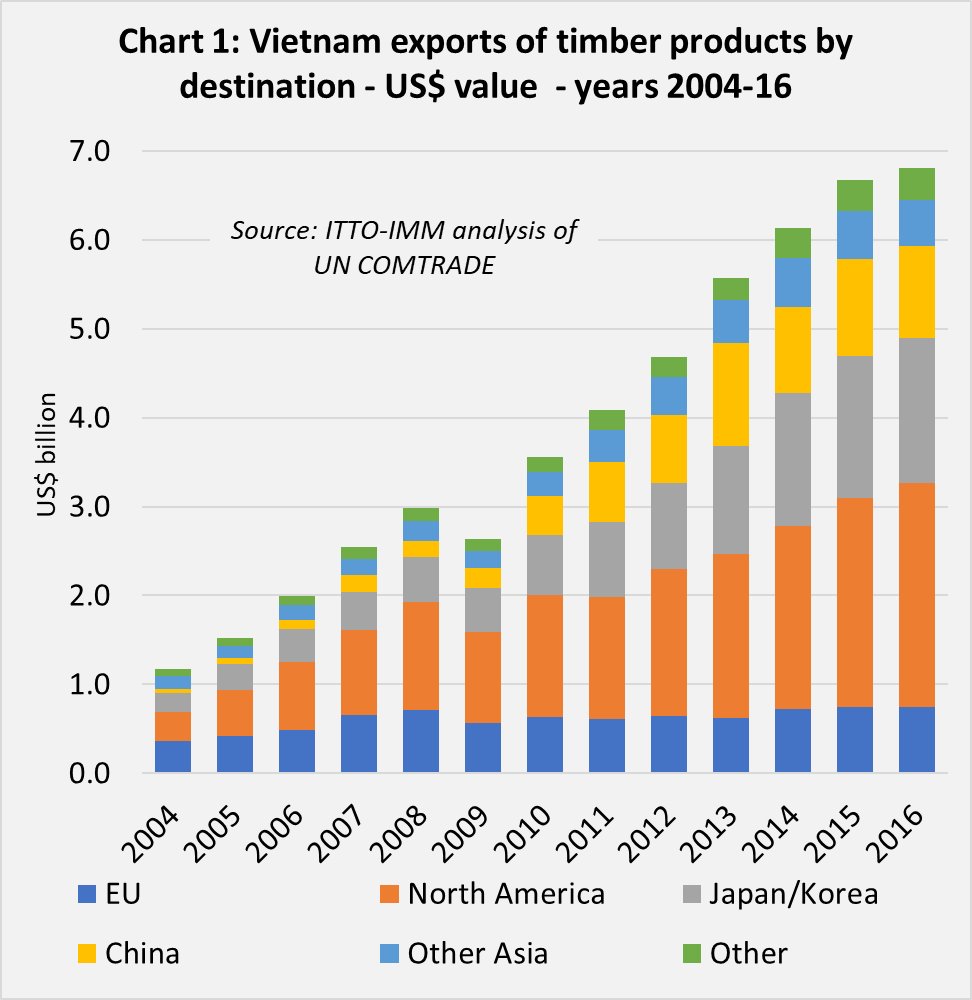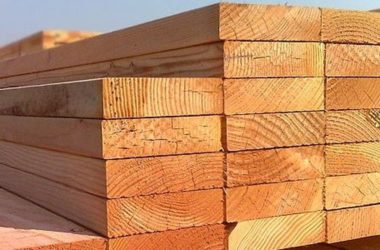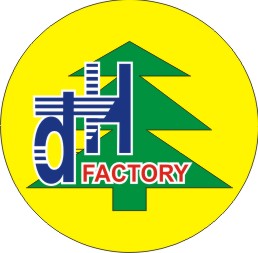Looks to U.S. market and indoor lines for growth
Scansia Pacific Co. Ltd., was among the first outdoor furniture manufacturers in Vietnam to figure out how to sell successfully to the American market.
Casual specialty retailers may be familiar with its wood furniture designs even if they don’t know who actually made it. That’s true of a few other Vietnamese manufacturers, too, because U.S. distributors guard the names of their suppliers.
Over the past two decades, Vietnam vendors have improved their production methods and built up export capacities. They are looking beyond supplying their current customers in Europe, Asia and the Australian/New Zealand markets toward the United States, which lifted its trade embargo against Vietnam in 1994 and normalized diplomatic relations the following year.
Many more of those furniture manufacturers specialize in outdoor furniture than indoor, although some make both. Most will exhibit at the Ho Chi Minh City Expo Oct. 3–7. A few will participate at the Casual Market in Chicago this month, and a few others next month at The International Home Furnishings Market in High Point, N.C. Exsero Chairman Jeff Dilley said retailers who visited his booth at the Las Vegas Market in July were strongly interested in the Vietnamese-made mixed-media furniture. Retailers who haven’t seen it yet can expect to soon.
Minneapolis-based Creative Woodwork International began importing Vietnamese-made outdoor furniture six years ago and now reports increased retail demand for Forest Stewardship Council certified wood furniture and sustainable harvesting.
“It’s very clear to me what the benefits have been,” CWI President Bernadette Carroll said. “The first one, and what really attracted us to working with manufacturers in Vietnam, was the craftsmanship and quality. Hands-down we thought, compared with other countries in Asia, Vietnam was really a leader in their woodworking. They produce top-quality work.”
In addition to Vietnamese workers’ skills, Carroll noted their ethics, professionalism and reliability. On-time shipping presents no problems. “Underneath that was their compliance to the FSC certification and environmental standards,” she said. “With a lot of other countries that could be challenging and with Vietnam, they’re really at the top of the list for compliance. That’s so important, especially in today’s marketplace. Each year, the criteria get more stringent. The retailers are demanding that you have proper certification and this past season we saw everyone had to step up to stay in the game.”
In business since 1991, Scansia was among the first licensed in Vietnam for furniture foreign investment, Managing Director Nguyen Chien Thang said. The Vietnamese-Norwegian joint venture began by selling teak and pine furniture and added tropical hardwoods in 1992 under its Scanviwood division. Four other company divisions exist now with seven factories in Vietnam and one in Indonesia, Thang said.
By 2001, Scansia was able to make outdoor furniture using more materials, such as aluminum, water hyacinth and resin. It ships about 1,500 containers of outdoor furniture and metal interior decor each year.
In 2004, Scansia’s outdoor furniture sales volume was $13.3 million, up from $11.7 million in 2003. All of its products are exported for combined revenues of $20 to $25 million (U.S. dollars) a year, Thang said.
“Now 80% of our market is Europe, and it has reached saturation,” Thang said. Like other Vietnamese outdoor furniture manufacturers, Scansia learned from its years of supplying garden furniture to the European market, mainly to Scandinavian countries, the United Kingdom, Germany and France. Other customers are in Japan and the Middle East with about only 5% of its sales to America, Thang said.
Continuing to expand, Scansia is investing $15 million to build an eighth factory in neighboring Dong Nai province. Two of the new plant’s three lines will be reserved for indoor furniture, which is a growth strategy several outdoor furniture makers in Vietnam are testing.
“Vietnamese are entrepreneurial-minded,” Thang said. “If they see profit, tomorrow they will be there.”
Mentoring other manufacturers
My Tai Furniture, with facilities in Binh Dinh province and Ho Chi Minh City, got its start in 1999 as a joint venture and subcontractor for Scansia Pacific. By 2003, the high-end outdoor furniture manufacturer was supplying seven customers in the United States, Europe, Australia and New Zealand.
“At that time, we were strong enough and decided not to subcontract with Scansia Pacific,” said Le Duy Linh, chairman and managing director, My Tai. “We still have a good relationship with Scansia, because he instructed me.”
Last year, My Tai’s customer base grew and spread to include Canada, Spain and the UK. Linh said its U.S. customers account for 30% of its exports. He expects that percentage to grow because My Tai plans to exhibit in Las Vegas, starting with the 2006 National Hardware Show. My Tai employs nearly 2,000 workers in its two factories. In response to customer requests, My Tai plans to add a factory for indoor bedroom furniture, expected to be complete in March. Construction was to start this month on My Tai’s Rainbow Resort in the Nhon Hoi area of Binh Dinh province to make it easier for customers who want to visit, Linh said.
That follows the lead of Resort Hoang Anh Qui Nhon, crafted of wood and stone on the shore of the Red Sea of China and owned by an outdoor furniture manufacturer of the same name. Established in 1998, Hoang Anh Qui Nhon and two related companies employ 1,200 to 1,400 workers and supply mainly the European market.
Supplying market demands
Serving the European market has shaped many Vietnamese furniture manufacturers. For example, Tien Dat Co. opened in 1999 and supplies customers in the United Kingdom, Germany, France, Italy, Australia and the United States.
“The labor cost is cheaper here than in Saigon, and I think these workers are more skillful,” said Coa Thi My Binh, Tien Dat, vice director. Tien Dat and Cong Ty Tnhh Binh Phu, located across the road in Phu Tai Industrial Zone, are among 58 furniture manufacturers in Binh Dinh province.
Nguyen Lien, chairman of Quoc Thang Co. Ltd., was among the first to open an outdoor furniture plant in the Highlands province. In 1990, the company became privately owned under the name Van Trung and in 1996 established Quoc Thang. The business, which now includes three divisions, employs about 2,000 workers and will double the number with the completion of a 50,000-square-meter plant that will add aluminum and iron capabilities.
Having a highly educated workforce is one advantage Lien counts on. Much of his staff have bachelor’s degrees and three have master’s degrees. “The most important thing in a company is its humans,” he said.
Showing at Spoga for the last five years has helped to expand Quoc Thang’s European sales of FSC eucalyptus, keruing and kapu wooden furniture. Lien recently spent a month in the United States to gather information and plans to exhibit in Chicago in 2006.
“The speed of development is very fast,” Lien said. “Because Vietnam is closer and closer to the world market.”
In July, Tran Duc put the finishing touches on its dramatic 40,000-sq.-ft. showroom, designed to capture the feeling of a tropical jungle near its headquarters in Binh Duong Province. Infinity pools with island-like displays of outdoor furniture groups are featured inside the massive showroom, which surrounds a courtyard complete with waterfall and stream.
“It’s all about making yourself a bit different,” said Tran Duc Sales Director Steve Jenkins. “This will be a great place to bring customers.”
Jenkins worked as an importer in New Zealand before he and partner, Tran Duc Lam, founded the outdoor furniture manufacturer five years ago. Tran Duc supplies customers in New Zealand and Australia as well as Europe and the United States. “Because we’re so strong in both hemispheres, we keep all our workforce employed 12 months of the year,” Jenkins said. “We’re able to retain the skilled ones.”
Tran Duc held a grand opening for its North American sales office in Vista, Calif., in July. This month, Tran Duc’s products will be exhibited at the Casual Market in Chicago. A sampling also will be shown as part of the Vietnam Pavilion at the High Point furniture market, Oct. 20–26.
American buyers may be familiar with companies like Tropicdane and ScanCom, which also participate in the Casual Market in Chicago.
Tropicdane was founded in 1986 in Bangkok, Thailand, as a quality control outsource company when its president Carsten Lehn recognized a need for designs with more Western influence. “My mission was to utilize the skill of the Asians to produce things,” Lehn said. “My background was in design so I tried to bring some forms, colors and shapes that would appeal more to the Western market.”
Pursuing that idea for furniture and handicrafts, Lehn set up an office in Laos and in 1989 joined the first foreign investors to set up an office in Vietnam. “In 1994, we moved the whole company over here and I thought, ‘This is where it’s going to be in the future,'” Lehn said. The company now employs more than 1,000 people in four factories. One factory specializes in wood furniture while another makes mosaic tabletops, a third makes outdoor fireplaces and the fourth makes vases and containers.
“We create a concept and whatever product we need in that concept we try to produce ourselves,” Lehn said. “So the demand comes first and then we build the factory afterward. For the last five years, our goal has always been the inside out concept. I want to bring the garden inside and the living room outside.”
At the Casual Market in Chicago, Tropicdane will debut modular outdoor kitchens with stone or mosaic tops, wooden bases and stainless steel hardware. The concept was a hit this season in Denmark, he said.
ScanCom, based in Denmark, is a family-owned company started in 1995 that has three factories in Vietnam’s Binh Duong Province doing full production of all lines except teak furniture, which it makes in Indonesia. ScanCom added the outdoor woven category three years ago. This year, it moved its woven production from Denmark to Vietnam, adding 1,500 weavers. “Next year, we expect to have 3,000 weavers because demand is just exploding,” said Christian Rudolph-Christiansen, ScanCom international marketing manager. “We have two people to one chair so they can weave faster.”
After ending its five-year contract with Glavine last year, ScanCom built three sawmills in Brazil to ship tropical hardwood to the Vietnam factories. Most of its furniture is made of eucalyptus, mora, greenheart or yellow balau. About 80% of its wood is FSC certified. If such certification isn’t possible, the wood comes from well-managed forests in South America, Malaysia, Guyanan or South Africa. Internal systems are in place to verify the chain of custody of wood.
“We have doubled our capacity and size every year, and we have kept our environmental and social standards high — for both aspects we are setting the standards,” said Le Thi Nhu Hoa, ScanCom international environment manager. “ScanCom’s really proactive. It costs money for verification, but we do not want to lose our reputation.”
That reputation is likely to grow in the United States this year because ScanCom entered a long-term lease with the Merchandise Mart in Chicago for the company’s first North America showroom.
“ScanCom is committed to providing the North American market with quality outdoor furniture,” said Jay Weber, sales manager, ScanCom North America. “Opening a showroom in the Merchandise Mart in Chicago gives us the visibility and resources we need to expand in our industry.”
Certifying wood sources
While not vital to most U.S. consumers, Vietnamese manufacturers use certified wood because of consumer demands in Europe and other global markets. Furniture manufacturers in Vietnam are among the most active for having a reliable FSC chain of custodies, Frank Judd of the Rainforest Alliance said. When asked, most manufacturers said 70% or more of their wood comes from certified sources in Central America, South America, America or South Africa.
Anvico makes outdoor and indoor furniture under the Anvimex brand and also operates Anh Viet Import-Export Trading Co., Director Dong Thi Anh said. All its raw materials are either FSC certified or taken from well-managed forests. For the U.S. market, the Qui Nhon City-based company uses teak, yellow balau, keruing and eucalyptus. Other kinds of wood are used to make furniture for customers in Europe, Asia and Australia.
“We are supplying FSC certified wood in the U.S. market even though they don’t ask for it,” said Anh, who has attended the Casual Market in Chicago for the last three years. Eighty percent of her European customers do request certified wood products, she said.
“Under the kind support of Binh Dinh province and the People’s Committee, our growth and revenue increase year by year,” Anh said. She estimated its annual growth at 20–25%.
Dao Ke Nho, sales manager of Khai Vy Corp., also spoke of continuing sales growth for its outdoor furniture. “Last year, we sold to the U.S. about $5 million,” Nho said. “This year, we expect $7 million or more.”
Companies such as Nhon Hoa, Nguyen Hoang, Huu Thinh and The Vu may exhibit at Spoga Cologne, Singapore Expo, Hanoi Expo or in Japan, but not in the United States and have not penetrated the U.S. market in a big way. Some manufacturers said they have supplied samples to distributors in the United States and await a reply.
Pisico, an import/export company with four outdoor furniture factories, exhibited in a government-sponsored booth at the High Point market in 2002 and, as a result, added a few U.S. customers who sell its teak furniture under their own brands. Customers in Europe prefer its eucalyptus furniture, said Pisico Vice General Director Nguyen Tan Binh.
Eucalyptus powder left over from Pisico’s furniture production is recycled for paper production. The multifaceted manufacturer harvests forests in Binh Duong province and also is involved with agricultural processing, tourism and television. After noting furniture exports account for about $16 million of its $26 million export total, Binh said, “We want growth, but wish and reality are different.”
(Vinanet)


































